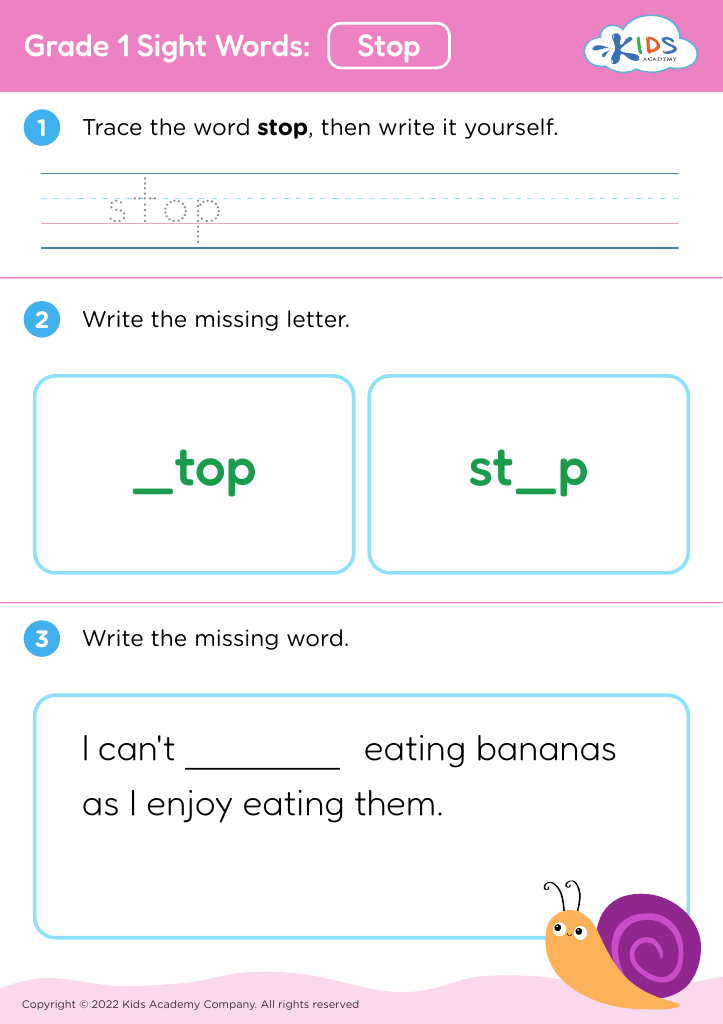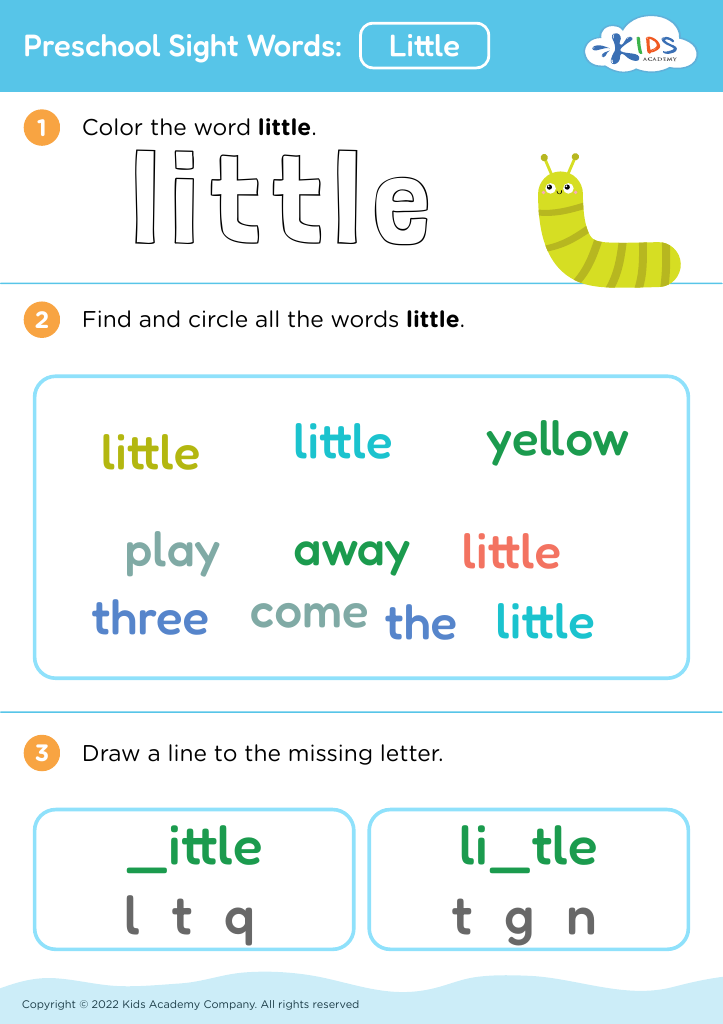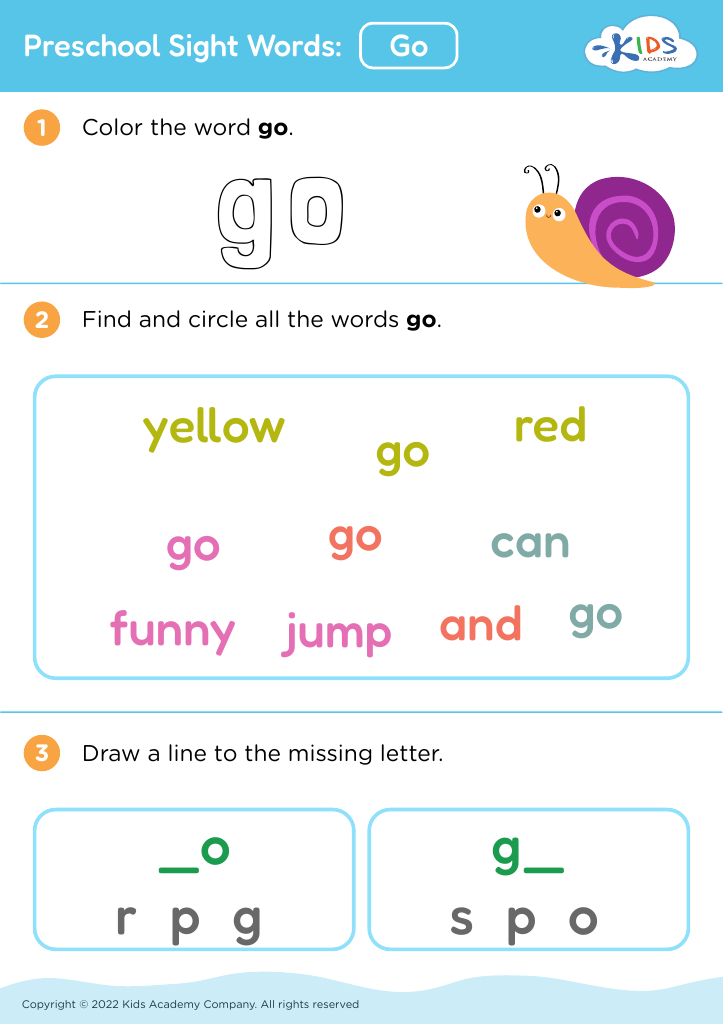Understanding patterns Sight Words Worksheets for Ages 4-7
8 filtered results
-
From - To
Discover our "Understanding Patterns Sight Words Worksheets" specially designed for children ages 4-7. These engaging worksheets help young learners recognize and understand sight word patterns, promoting early literacy skills. By focusing on recurring word sequences, children build a solid foundation in reading, enhancing their vocabulary and comprehension. Tailored to be fun and interactive, our worksheets capture children’s interest while fostering critical thinking and attention to detail. Perfect for home or classroom activities, these resources make learning to read enjoyable and effective. Equip your child with the tools they need to thrive in their reading journey today!
Understanding patterns and sight words is crucial for children aged 4-7, as it forms the foundation for their literacy skills and overall academic success. At this age, children are developing essential cognitive abilities, and recognizing patterns helps them make connections between sounds and letters, ultimately aiding in their reading fluency.
Sight words—commonly used words that children are encouraged to recognize by sight—are vital because they make up a significant portion of written text. Mastery of sight words allows young learners to read more confidently and with greater comprehension. When children can quickly recognize these words, they can focus on understanding the meaning of sentences rather than getting bogged down in decoding each individual word.
Parents and teachers play a pivotal role in fostering this skill. Engaging children in activities that involve patterns and sight words, such as games, songs, and repetitive reading, makes learning enjoyable and effective. This not only boosts literacy but also cultivates a positive attitude toward reading and learning. By emphasizing these elements, adults can support children's readiness for future academic challenges, promote skill retention, and instill a love for reading from an early age. Education at this foundational stage is crucial for lifelong learning and development.

























